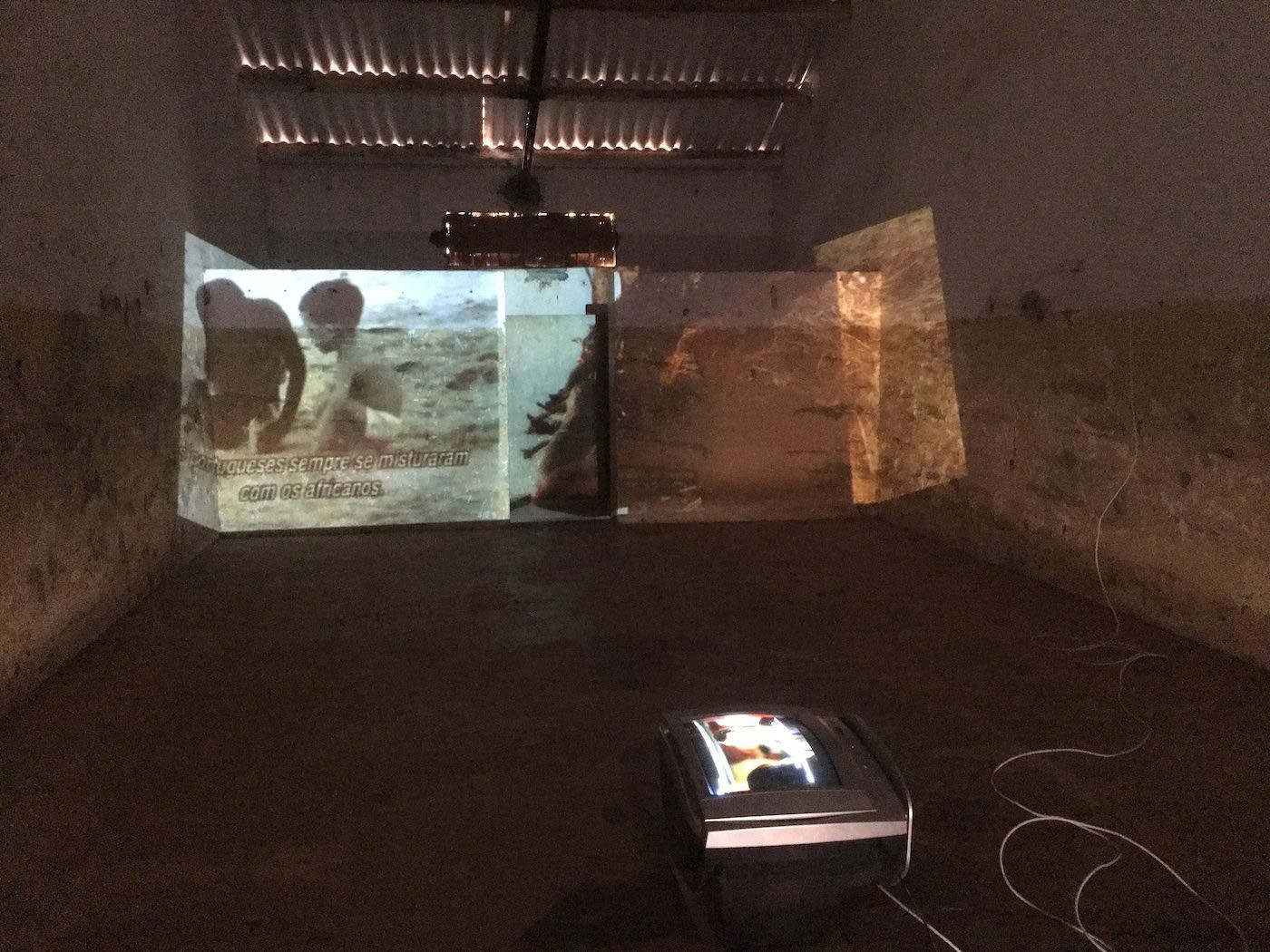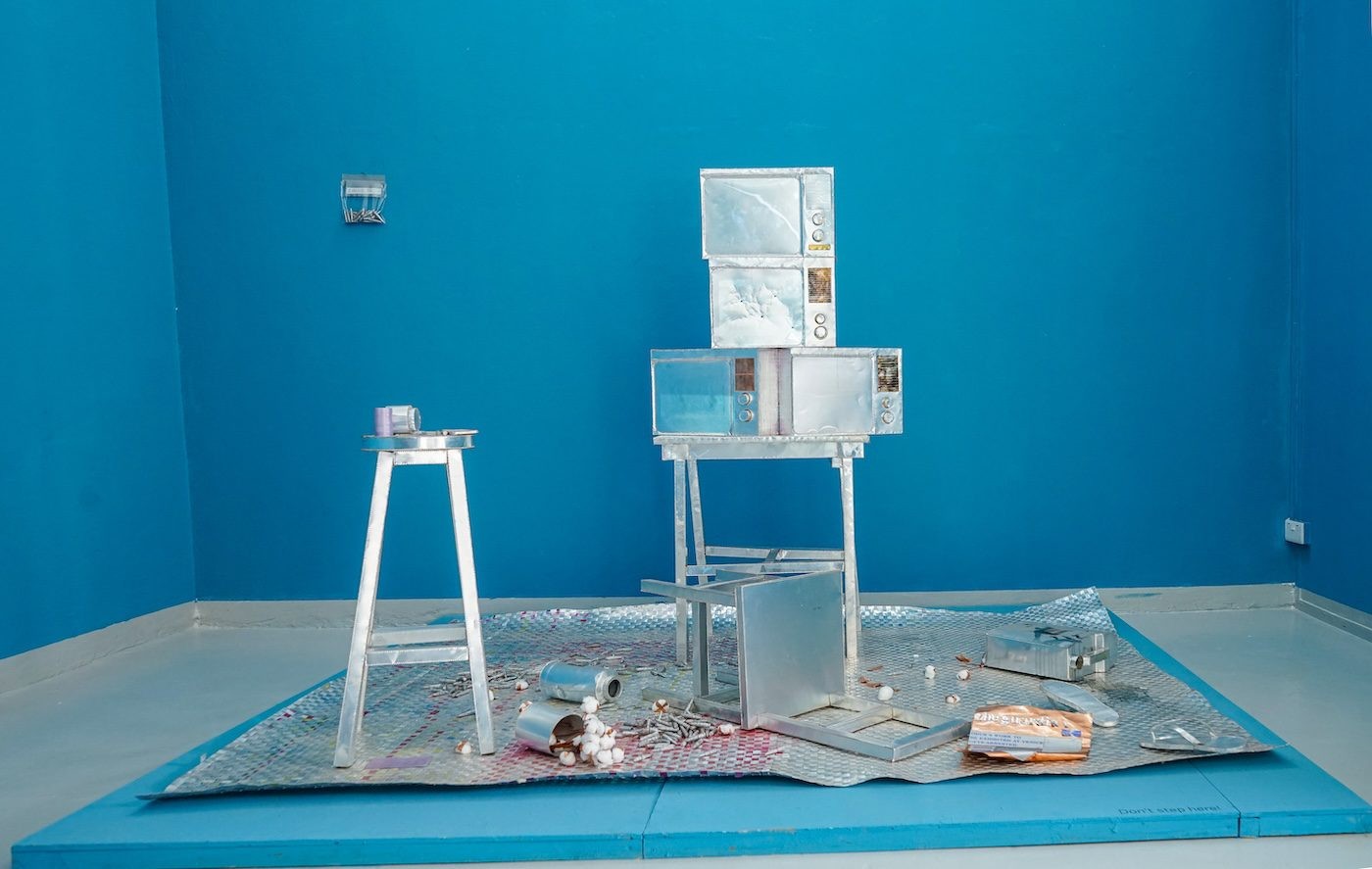Debating Memories with Several Selves

Immy Mali, Kasonko the portal, 2018. Digital edition. The dwelling place for all memory. In playing kasonko, we ascended in classes, we bought land and built houses, we became landlords and evicted neighbours.
10 February 2021
Magazine América Latina Magazine
Words Theresa Sigmund
6 min read
Ugandan multimedia artist Immy Mali explores personal and postcolonial realities
Contemporary And: You have written sixty-six very intimate letters to a person named Marcue. I find it really courageous that you are sharing them with the public. Thank you! Can you tell us who Marcue is and why you started writing to her?
Immy Mali: Thank you. I started writing the letters at a time when I wasn’t too sure what sort of direction I intended to take with my installations and practice in general. I was drawn to themes of memory and childhood and my choice of materials reflected precarity – rusted metal, hair, broken glass, razor blades. Many of these works related to childhood experiences and so, in a bid to understand where this morbid imagery of childhood was coming from, I started to write to my younger self, Marcue. My hope was that this monologue, which quite often feels like a dialogue, would unpack a childhood that reflected itself in precarious objects.
C&: In your first letter you write to Marcue: “I hope we can become good friends.” This sentence touched me a lot, because it sounds like a deep desire to make peace with your past, almost like trauma therapy. Can you share some of these processes with us?
IM: Well, I wouldn’t necessarily call it trauma therapy. The letters did however allow me to look at myself and others in a way that I had never done before. They took shape mostly when I was away from Uganda. So maybe they were also a way to cling onto a piece of “home.” When a cat passes by, it prompts me to ask Marcue about Nancy, my childhood cat who eloped with the fat cat belonging to my neighbors. When I hear Beethoven’s Für Elise it makes me think of the ice-cream man pushing his cooler on a bicycle through the squeezed alleyways of home. Everyday objects – balls, cups, mats, sounds – trigger a memory and thus desire to write, to keep us in conversation. Marcue started as a mad idea, but as the madness started to make sense, she began to take form. When I write to Marcue today I treat her as a totally independent being who will one day send back boxes of replies to every letter I’ve ever written to her.
C&: There is a tension between the many questions you ask Marcue and the fact that we, the readers, do not get to know the answers. Through the echoes of a silenced past you also remind us of colonial structures with your liberated and liberating voice. How much do these structures of power and knowledge play a role within your work?
IM: I like to think of my installations, sound works, and drawings as responses from her. Of course it’s a little bizarre that I make the artworks, but that’s how I can understand it. In the process of writing the letters and beginning to dissect things as simple as nursery rhymes and games, I realize that education from a pretty early age shapes our way of thinking. The letters slowly unravel existing truths, from religious dogmas to erasures of identity through an education system that demonized and punished children for speaking their local language. The going back and forth between Immy and Marcue gets us to a place of lots of current and historical baggage, that at times I am unsure how to deal with.
C&: Ngūgī wa Thiong’o reminded us of the importance of perceiving language as culture and valuing it as collective memory, while Moses Serubiri has spoken of repatriating language. In some letters you switch between English and your mother tongue, Lugbara.
IM: In a conversation I had with Moses a while back, I told him I wished I had a Lugbara accent – then I wouldn’t have to explain to people why my English sounds “good,” as they claim. Language is most definitely a stronghold for anyone’s identity and culture. I speak four languages – Luganda, English, a bit of Lusoga, and what my relatives from my hometown in Arua call Kampala-Lugbara. So attempting to write and making sound works in these languages avails me of a place to relearn, unlearn, and express what cannot be expressed in English. There are sounds and intonations that are simply beyond the limits of what English can provide. Have you thought in one language and had to express the thoughts in another? That’s sort of what happens often in this process of writing.
C&: In your video By Shoe I Love You (2018), two kids play a game with their hands. In Because you play…we live (2020), animated children play in front of ancient paintings. What does the playfulness in your works stand for and what fascinates you about it?
IM: Play is a space where children take control, often outside an adult world. It’s as if kids go to work when they go to play. This idea is vital for me in my attempts to get in touch with Marcue. Some of the games also mimic the adult world and responsibilities, such as the game of buying and owning land in Kasonko. Also, the playground was a place I had to be protected from often as a child so that I wouldn’t hurt my left leg, rendered paralyzed by a medical accident at age seven. Perhaps it’s also the yearning to play that draws me back to it over and over.
C&: For C& you’ve created animated videos and sound pieces. In Dreams in my head, we get a glimpse into Marcue’s childhood photo album. How do the different layers of the online exhibition speak to each other?
IM: All the layers are simply Marcue – her responses to the letters. The photo album is an attempt to portray her through the blurred imagery of memories. These memories are often triggered by objects that Marcue probably used and are thus lenses for seeing her more clearly. The sound piece and animations all are birthed from the letters. So the online exhibition is a way to converge the various media of the project.
The multilayered experience of Letters to my Childhood is presented in six chapters in the frame of C& Commissions. Explore the art workhere.
Immy Mali lives and works in Kampala. Her work revolves around notions of presence and absence, personal memories of childhood juxtaposed with current personal and collective narratives in Uganda and abroad. In Mali’s work, memory is a tool through which she describes the social (cultural and religious), political and economic landscape of Uganda not withholding post colonial and British imperial influences in the shaping of identities. Using a variety of media including, text, video, sound, sculpture, installation, animation, her work attempts to unpack the complexities and entanglements of memory and existence in a neo/postcolonial Uganda.
Interview by Theresa Sigmund.
Read more from

Sampling the City: Tristany Mundu’s Cypher with Linha de Sintra

The Entanglement of Migration, Indigenous Peoples, and Colonialism

Cabo Verde’s Layered Temporalities Emerge in the Work of César Schofield Cardoso
Read more from

Kampala Calling: The African and Diaspora Artists Flocking to Uganda

Odur Ronald: ‘Why is it easier for raw cotton to reach European capitals than for Ugandan people to travel anywhere?’

